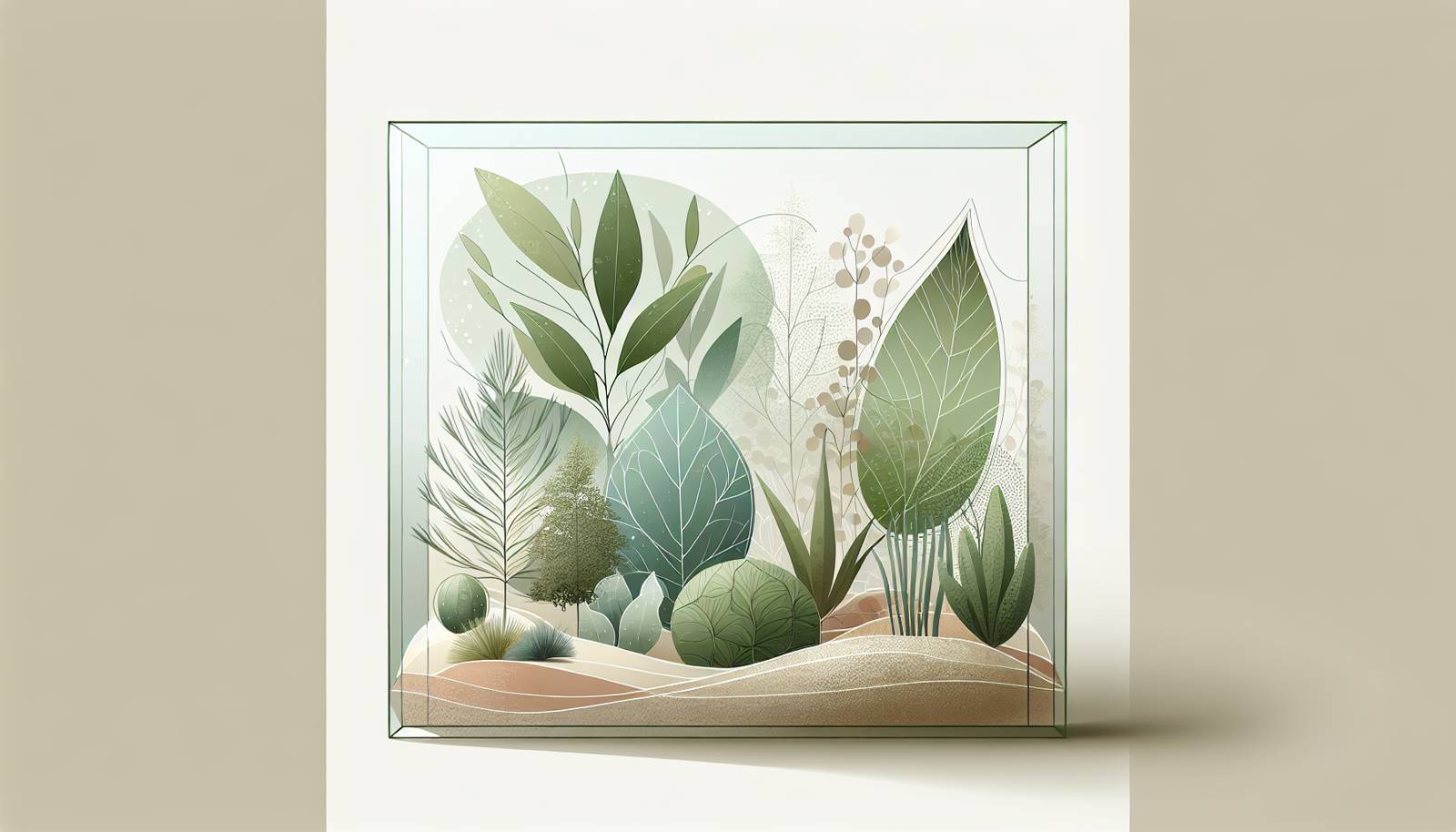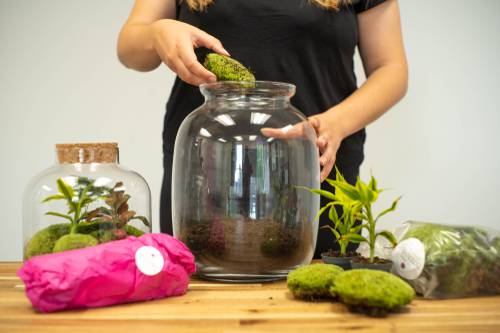
FAQ About Indoor Plant Terrarium Ecosystem Design

What is an indoor plant terrarium ecosystem?
An indoor plant terrarium ecosystem is a small, self-contained indoor garden that simulates natural plant environments. It usually consists of a transparent container where plants, and sometimes small animals, live in a controlled microenvironment. This ecosystem can be either open or closed, with each type having different requirements for air and humidity control.

How do I start designing an indoor terrarium ecosystem?
To start designing an indoor terrarium, choose a suitable container that fits your aesthetic preferences and desired plant life. Select plants that are appropriate for the light and humidity levels of your chosen terrarium type (open or closed). Prepare layers of substrate, including drainage (gravel or pebbles), activated charcoal to filter impurities, and potting soil suitable for your selected plants. Finally, plant your choices and water them appropriately.

What plants are best for a closed terrarium?
Closed terrariums thrive with plants that enjoy high humidity and low light conditions. Some ideal choices include ferns, mosses, ivy, and fittonia (nerve plant). These plants are well-suited for the humid, warm environment created by a closed container.

What is the difference between an open and closed terrarium?
An open terrarium is exposed to the surrounding air, making it suitable for plants that thrive in drier conditions, such as succulents and cacti. In contrast, a closed terrarium is sealed, creating a warm, humid environment ideal for tropical plants. Each type requires different maintenance practices, particularly concerning watering and light exposure.

How do you control humidity in a terrarium?
Humidity in a terrarium can be controlled by selecting the right type of plants, as well as by managing ventilation. For closed terrariums, ensure they are properly sealed, and monitor for excess moisture or condensation. Open terrariums may require more frequent misting if the air becomes too dry. Using a hygrometer can help you track and maintain the correct humidity levels.

What substrates are best for terrariums?
Substrate choice is crucial for terrarium health and generally includes a few layers: a drainage layer of pebbles or gravel, a layer of activated charcoal to keep water fresh, and a layer of potting soil compatible with the specific plant species. Some terrariums may use specialty substrates like sphagnum moss for higher humidity needs.

How often should I water my indoor terrarium?
Watering frequency depends on the type of terrarium and plants you choose. Closed terrariums often require less frequent watering as they recycle moisture within the container. Open terrariums may need more regular watering due to evaporation. Always check the soil moisture before watering to avoid overwatering.

Can I include animals in my terrarium ecosystem?
Yes, you can include small, non-disruptive animals like snails, small frogs, or insects in your terrarium. However, consider the needs of both the plants and the animals before introducing them to ensure it remains a balanced ecosystem. Always research compatibility and care requirements.

How do you prevent mold growth in a terrarium?
Preventing mold in a terrarium involves maintaining proper humidity levels, ensuring good air circulation, and not overwatering. Incorporating activated charcoal in the substrate helps absorb any excess moisture and potential impurities. If mold appears, remove affected plants and clean the glass to prevent further spread.

Is a terrarium ecosystem self-sustaining?
A well-designed terrarium can be largely self-sustaining, especially closed systems, which recycle water by condensation and evaporation. However, they may still require occasional maintenance, such as pruning plants, adding water, or adjusting light exposure.

What types of containers are best for terrariums?
Terrariums can be built in any transparent container to allow light. Common choices include glass jars, aquariums, or specially designed terrarium containers with openings or seals depending on the style. Choosing a container with a lid is critical for closed terrariums, while an open design is perfect for arid-inspired setups.

How much light does a terrarium need?
Light requirements can vary depending on the plants you choose. Generally, terrariums benefit from indirect sunlight, as direct sun can overheat the environment. Artificial grow lights can supplement light, especially in rooms with low natural sunlight. Always refer to the specific needs of your chosen plants.

Can succulents survive in a closed terrarium?
Succulents are typically not suitable for closed terrariums because they prefer dry conditions, whereas closed terrariums create a humid, moist environment. It's better to plant succulents in open terrariums with plenty of airflow to avoid rot and other issues linked to high humidity.

How do I maintain the temperature in my terrarium?
Maintaining the right temperature in a terrarium is generally managed by ensuring it is placed in an area with stable room temperatures, away from drafts and direct heat sources. The plant selection should match the natural temperature tolerance of the terrarium's environment.

How do I deal with pests in a terrarium?
Dealing with pests in a terrarium involves identifying the type of insect, such as fungus gnats or springtails, and treating appropriately. Solutions include reducing watering if overly moist and using natural, non-toxic pest controls like neem oil or introducing beneficial insects if appropriate.

Is activated charcoal necessary for a terrarium?
Activated charcoal is highly recommended in a terrarium setup as it helps neutralize odors, filter pollutants, and reduce the build-up of harmful bacteria. This is particularly important in closed terrariums, where airflow is limited, and maintaining a clean environment is crucial.

What are common mistakes when creating a terrarium?
Common mistakes include overwatering, choosing incompatible plants, poor container selection, and insufficient drainage. Ensuring the right balance of all these elements is key for a healthy terrarium. Researching plant species' needs before planting is vital for success.

Do I need to fertilize plants in a terrarium?
While terrarium plants generally require minimal fertilization, they may benefit from occasional feeding with a diluted, balanced liquid fertilizer. This should be done sparingly to prevent overgrowth and nutrient imbalance, particularly in closed systems.

How can I decorate my terrarium?
Terrariums can be enhanced with decorative elements such as rocks, miniature figurines, or natural features like wood and shells. Ensure these items are clean and suitable for the humid or dry environment of your terrarium to prevent issues like mold or decay.

What are the benefits of having a terrarium indoors?
Terrariums offer several benefits including improved air quality, aesthetic appeal, and a chance to learn about plant ecosystems. They are low maintenance compared to traditional gardens and offer a unique way to bring nature into small indoor spaces.
